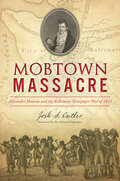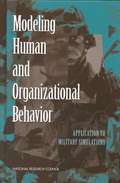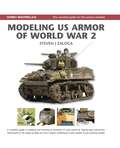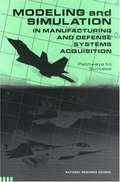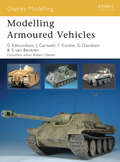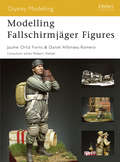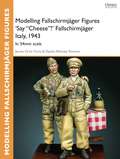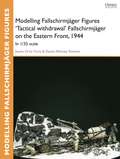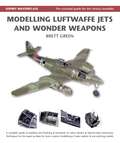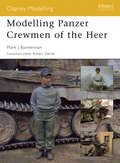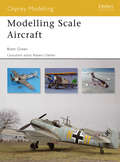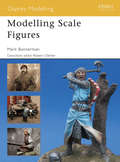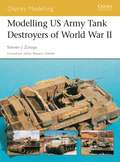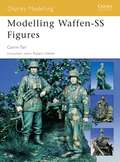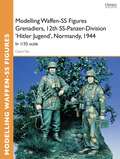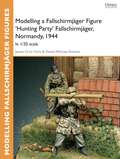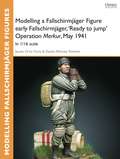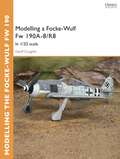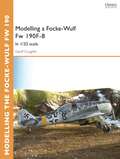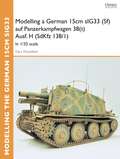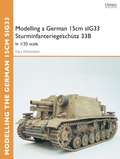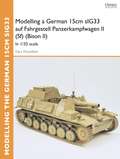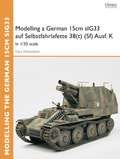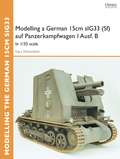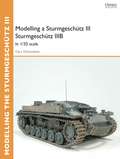- Table View
- List View
Mobtown Massacre: Alexander Hanson and the Baltimore Newspaper War of 1812 (True Crime)
by Josh S. CutlerWinner of the 2020 Baltimore History Prize, this is a gripping account of how a Federalist editor risked his life to defend his anti-war views. With a bitterly divided nation plunged into the War of 1812, Alexander Hanson penned an anti-war editorial that provoked a violent standoff that crippled the city of Baltimore and left Hanson beaten within an inch of his life. This little-known episode in American history—complete with a midnight jailbreak, bloodthirsty mobs and unspeakable acts of torture—helped shape the course of war, the Federalist Party and the nation&’s very notion of the freedom of the press. Josh Cutler&’s history of the Mobtown Massacre offers a lesson in liberty that reverberates today. &“A compelling story that&’s as timely today as it was two centuries ago.&” —Congressman William R. Keating &“A remarkably vivid, engaging and very readable account of a brief but major event in Baltimore history . . . which reflected the sharp political divisiveness of the time at the start of the War of 1812, and had important implications for freedom of the press and the war itself.&”—Charles Markell, board member, Baltimore City Historical Society &“A timely and scholarly examination of one man&’s struggle for freedom of the press.&”—Fred Dorsey, Howard County, MD historian &“Cutler&’s book tells not only of politics of that era and the controversy of a war that ultimately led to the burning of the White House and the writing of &‘The Star-Spangled Banner&’ by Francis Scott Key, but also how it challenged America&’s devotion to a free press.&” —The Baltimore Sun
Modeling Human and Organizational Behavior: Application To Military Simulations
by Panel on Modeling Human Behavior Command Decision Making: Representations for Military SimulationsSimulations are widely used in the military for training personnel, analyzing proposed equipment, and rehearsing missions, and these simulations need realistic models of human behavior. This book draws together a wide variety of theoretical and applied research in human behavior modeling that can be considered for use in those simulations. It covers behavior at the individual, unit, and command level. At the individual soldier level, the topics covered include attention, learning, memory, decisionmaking, perception, situation awareness, and planning. At the unit level, the focus is on command and control. The book provides short-, medium-, and long-term goals for research and development of more realistic models of human behavior.
Modeling US Armor of World War 2
by Steven J. ZalogaUnited States tanks and other armored fighting vehicles in World War II have always been some of the most popular subjects for scale modelers, and hundreds of kits have been and are currently manufactured. Now, renowned modeler and AFV expert, Steven J. Zaloga, presents the definitive guide to modeling these famous fighting vehicles. Based around four building projects, Zaloga presents all the techniques necessary to get a great finish on a model, including super-detailing, correcting a flawed kit, building a resin model, scratch building, and painting and markings. These step-by-step guides is enhanced by numerous photographs specially shot form Steven's personal collection of US WWII armor, which looks at the vehicles with a modeler's eye and aid in obtaining the most realistic results on a finished project.
Modeling and Simulation in Manufacturing and Defense Systems Acquisition: Pathways to Success
by Committee on Modeling Simulation Enhancements for 21st Century Manufacturing AcquisitionA report on Modeling and Simulation in Manufacturing and Defense Systems Acquisition
Modelling Armoured Vehicles
by Gary EdmundsonA central resource to all armor modelers from the complete beginner to the more experienced modeler, this book details all the steps involved in creating a realistic and attractive model armored vehicle. Gary Edmundson and his colleagues take the reader through all the steps required in armor modeling, from the basic stage of putting the kit together, through to the intricacies of texturing and elaborate paint schemes, finishing with how to display your model.Each chapter is illustrated with a range of different models covering the whole spectrum of armor modelling, including both Second World War Axis and Allied armor as well as more modern subjects. The authors also cover specific techniques and subject areas in which they individually excel, highlighting the different tools and approaches required for each individual discipline. Lavishly illustrated with over 250 images, this book contains all the detailed, step-by-step information you need to become an expert armor modeler.From the Trade Paperback edition.
Modelling Fallschirmjäger Figures
by Jaume FornsThe German Fallschirmj¿ger were elite soldiers, a factor that continues to ensure their popular appeal today, particularly among modellers. There are many Fallschirmj¿ger figures on the market, in plastic, metal and resin, and in all three of the most popular scales - 1/35, 1/32 (54mm), and 1/15 or 1/16 (120mm). Manufacturers currently produce figures related to every major campaign they were involved in. This is the first book to address the subject of German paratroopers for the figure modeller. All the major items of Fallschirmj¿ger uniform and equipment are covered, with an emphasis on specially designed paratrooper items. Camouflage uniforms were prominent among these units, with several patterns employed, and these are particularly attractive to the figure painter. Clear step-by-step instructions allow the reader to recreate these patterns in miniature with confidence and ease. This book will be of interest to all figure modellers, and to AFV modellers too, with the techniques explained easily transferrable to other scales. It covers painting, superdetailing, and conversion techniques (from simple to advanced), and key aspects of scene creation and setting, such as groundwork, balance, and composition, with projects ranging from single-figure studies to full-scale dioramas. Each chapter develops the modelling techniques in a progressive manner, as well as revealing the chronological development of Fallschirmj¿ger uniforms and equipment in sequence. This highly accessible book makes use of commercially available figures, from different firms and in different materials. Jaume and Daniel's superb presentation skills are brought to the fore in this visually detailed, packed and engaging treatment of one of the most enduring figure-modelling subject areas.
Modelling Fallschirmjäger Figures 'Say "Cheese"!' Fallschirmjäger Italy, 1943
by Jaume FornsThis is one of four guides addressing the subject of modelling a German Fallschirmjäger figure model. The major items of Fallschirmjäger uniform and equipment are covered, with an emphasis on specially designed paratrooper items. Clear step-by-step instructions allow the reader to recreate realistic figures in miniture scale with confidence and ease. Among the tutorials covered in this guide are face painting, creating complex camouflage patterns, weathering clothing, and figure conversion techniques, as well as vignette and diorama settings for your figures (creating groundwork and balancing composition). This title provides a detailed, step-by-step guide to modelling a Fallschirmjäger in Italy, 1943. It also provides a comprehensive list of available aftermarket products and kits of all scales. This guide forms part of Osprey Modelling 31 Modelling Fallschirmjäger Figures ebook.
Modelling Fallschirmjäger Figures 'Tactical withdrawl' Fallschirmjäger on the Eastern Front, 1944
by Jaume FornsThis is one of four guides addressing the subject of modelling a German Fallschirmjäger figure model. The major items of Fallschirmjäger uniform and equipment are covered, with an emphasis on specially designed paratrooper items. Clear step-by-step instructions allow the reader to recreate realistic figures in miniture scale with confidence and ease. Among the tutorials covered in this guide are face painting, creating complex camouflage patterns, weathering clothing, and figure conversion techniques, as well as vignette and diorama settings for your figures (creating groundwork and balancing composition). This title provides a detailed, step-by-step guide to modelling a Fallschirmjäger on the Eastern Front, 1944. It also provides a comprehensive list of available aftermarket products and kits of all scales. This guide forms part of Osprey Modelling 31 Modelling Fallschirmjäger Figures ebook.
Modelling Luftwaffe, Jets and Wonder Weapons
by Brett GreenWhile the Allies largely relied on mass production to help them win World War II, Hitler's Nazi Germany put a great deal of their limited resources into new technologies. Nowhere was this more evident than in some of the revolutionary aircraft developed for the Luftwaffe. By the end of 1944, a number of jet and rocket aircraft were entering front-line service in the roles of high-speed interceptor, fighter, reconnaissance and bomber.In addition to these tangible assets, which were used with varying degrees of success, the drawing boards of Germany were littered with dozens of advanced designs that never reached the prototype or production stages. Many of these operational and paper projects advanced the pace and influenced the direction of aircraft development in the decades following World War II, with many of the German engineers responsible for these innovations seamlessly continuing their roles in the United States and the USSR.Modellers have had a long fascination for the Luftwaffe's jet arsenal and secret weapons of fact and fiction and this new Osprey Masterclass will explore the Luftwaffe jets and rocket planes that saw service at the end of World War II. This title will discuss the background behind these wonder weapons before covering aspects of the aircraft in detail - powerplants, cockpits and ordnance - with photographic walkarounds and modelling guides. Special attention will then be given to the techniques for painting and finishing late-war jets and rocket aircraft, with step-by-step techniques offered for bare metal, puttied panel lines, unfinished plywood and the ever-controversial RLM camouflage colours. Finally, the rocket and missile technologies and the "Luftwaffe '46" phenomenon will also be covered, with modelers having a particular fascination for these "what if" aircraft that never saw service but now appear as scale models.From the Hardcover edition.
Modelling Panzer Crewmen of the Heer
by Mark BannermanAdding a figure to a kit or display can increase both depth and interest, yet building and painting figures continues to be a source of frustration to many armour modelers. This book provides full details on how to build and integrate realistic Heer Panzer crew figures with their vehicles, and on how to paint the key uniform variants and patterns worn by these distinctive troops. It begins with a brief discussion of the various mediums (plastic, resin and white metal), and a round up of the tools, materials and aftermarket items suitable for building and super-detailing figures. Using differing theatres and periods of the war, it shows how to paint common clothing types and patterns, such as the black panzer uniform, Splittermuster, feldgrau, and fatigues, as well as unique and fascinating variants such as Russian camouflage fabric and the motorcycle rubber coat. Special effects, such as dust-covering, and the addition of equipment and and other details are also covered in clear, step-by-step tutorials. The book will also challenge and inspire the more experienced crew figure modeler, with clearly explained 'kit-bashing' and scratch-building demonstrations, making this a treatment of the subject with wide appeal.
Modelling Scale Aircraft
by Brett GreenBrett Green, one of the hobby's leading names, provides a comprehensive introduction to all of the basic techniques and materials needed to build scale aircraft, from first opening the kit box to displaying the finished model - all in one clear and easy-to-follow expert guide. The many detailed photographs with step-by-step captions, and the accessible and informative text cover every aspect of aircraft kit construction from initial preparation through all stages of assembly to detailed finishing. This is an essential resource for the novice aircraft modeller.
Modelling Scale Figures
by Mark BannermanAdding a figure to a kit or a vignette can really bring it to life - yet building and painting figures continues to be a source of frustration to many modelers, with the results all too disappointing. However, help is at hand. The aim of this book is to equip the average modeller with techniques to successfully complete a figure from start to finish, and provides clear and easy to follow instructions on how to select, prepare, assemble, modify and paint realistic figures. Aimed particularly at the beginner and intermediate figure modelers, both those starting out in the hobby and those returning to it, it begins with a round-up of the range of figures available, a discussion of scale, and the tools and materials you need to get going. It then moves to exposing general construction and painting techniques, in clear, easy to master, step-by-step tutorials that will increase confidence and develop better technique. Then, using the four most popular historical periods as a framework (Medieval, Napoleonic, the American Civil War, and the modern era), it covers a wide range of individual techniques, such as showing how to paint clothing, body armor, camouflage patterns, flesh tones, weapons and equipment, and how to work in different scales - providing the reader with a veritable arsenal of artistic techniques, almost all of which can be applied to other periods and subjects. Special effects, such as weathering clothing, and adding key accessories and details are also covered in the step-by-step photographic tutorials. If you want to improve your figure modeling skills, it's a book you shouldn't be without, covering everything you need to help you model figures the right way.From the Trade Paperback edition.
Modelling US Army Tank Destroyers of World War II
by Steven ZalogaTank destroyers were the US Army's response to blitzkrieg, and were based around the concept of mounting a large anti-tank gun on a light, fast moving vehicle. They served in the Mediterranean, Pacific, and North-West Europe theatres, and were also supplied to other Allied armies. These vehicles form an attractive modelling subject; their open turrets provide plenty of opportunity for detail work, as demonstrated here by the author in clear step-by-step instructions. Packed with tips and techniques from a leading modeller and Allied armour expert, this title covers the M10, M18, M36, and M39, and features modelling projects in 1/35th and 1/72nd scale.
Modelling Waffen-SS Figures
by Calvin TanThis book explores the main patterns of Waffen-SS camouflage and dress and describes how to achieve these finishes in clear, step-by-step instructions. Advanced figure sculpting techniques, including conversions, are also featured, providing plenty of detail and diverse challenges to modellers of different abilities. Calvin Tan's superb base artwork and multi-layered painting technique are highlighted in this visually detailed, packed and engaging treatment of one of the most enduring, popular figure-modelling subject areas. The featured subjects include an SS-Sturmmann, an SS-Scharführer, and SS-Schütze, and a Panzergrenadier machine-gunner.
Modelling Waffen-SS Figures Grenadiers, 12th SS-Panzer-Division 'Hitler Jugend', Normandy, 1944
by Calvin TanWritten by one of the world's leading figure modellers, this guide features a main pattern of Waffen-SS camouflage and dress and describes in clear, step-by-step instructions how to achieve these finishes. Advanced figure sculpting techniques, including conversions, are also covered, providing plenty of detail and diverse challenges to modellers of different abilities. Calvin Tan's superb base artwork and his multi-layered painting technique are brought to the fore in this visually detailed and engaging treatment of one of the most popular figure-modelling subject areas. This title provides a detailed, step-by-step guide to modelling Grenadiers, 12th SS-Panzer-Division 'Hitler Jügend', Normandy, 1944. It also provides a comprehensive list of available aftermarket products and kits of all scales. This guide forms part of Osprey Modelling 23 Modelling Waffen-SS Figures ebook.
Modelling a Fallschirmjäger Figure 'Hunting Party' Fallschirmjäger, Normandy, 1944
by Jaume FornsThis is one of four guides addressing the subject of modelling a German Fallschirmjäger figure model. The major items of Fallschirmjäger uniform and equipment are covered, with an emphasis on specially designed paratrooper items. Clear step-by-step instructions allow the reader to recreate realistic figures in miniture scale with confidence and ease. Among the tutorials covered in this guide are face painting, creating complex camouflage patterns, weathering clothing, and figure conversion techniques, as well as vignette and diorama settings for your figures (creating groundwork and balancing composition). This title provides a detailed, step-by-step guide to modelling a Fallschirmjäger, Normandy, 1944. It also provides a comprehensive list of available aftermarket products and kits of all scales. This guide forms part of Osprey Modelling 31 Modelling Fallschirmjäger Figures ebook.
Modelling a Fallschirmjäger Figure early Fallschirmjäger, 'Ready to jump' Operation Merkur, May 1941
by Jaume FornsThis is one of four guides addressing the subject of modelling a German Fallschirmjäger figure model. The major items of Fallschirmjäger uniform and equipment are covered, with an emphasis on specially designed paratrooper items. Clear step-by-step instructions allow the reader to recreate realistic figures in miniture scale with confidence and ease. Among the tutorials covered in this guide are face painting, creating complex camouflage patterns, weathering clothing, and figure conversion techniques, as well as vignette and diorama settings for your figures (creating groundwork and balancing composition). This title provides a detailed, step-by-step guide to modelling an early Fallschirmjäger, Operation Merkur, May 1941. It also provides a comprehensive list of available aftermarket products and kits of all scales. This guide forms part of Osprey Modelling 31 Modelling Fallschirmjäger Figures ebook.
Modelling a Focke-Wulf Fw 190A-8/R8
by Geoff CoughlinThe Focke-Wulf Fw 190 is regarded as one of the best fighters of World War II. Designed by Kurk Tank, it first saw combat in the summer of 1941 and went on to be produced in several variants. It remains hugely popular subject for aviation scale-modellers. This title provides a detailed, step-by-step guide to modelling the Focke-Wulf Fw 190A-8/R8 in 1/32 scale. Key aspects such as finishing techniques, including painting and displaying your model are covered. This guide forms part of Osprey Modelling 27 Modelling the Focke-Wulf Fw 190 A, F and G also available as an ebook.
Modelling a Focke-Wulf Fw 190F-8
by Geoff CoughlinThe Focke-Wulf Fw 190 is regarded as one of the best fighters of World War II. Designed by Kurk Tank, it first saw combat in the summer of 1941 and went on to be produced in several variants. It remains hugely popular subject for aviation scale-modellers. This title provides a detailed, step-by-step guide to modelling the Focke-Wulf Fw 190F-8 in 1/32 scale. Key aspects such as finishing techniques, including painting and displaying your model are covered. This guide forms part of Osprey Modelling 27 Modelling the Focke-Wulf Fw 190 A, F and G also available as an ebook.
Modelling a German 15cm sIG33 (Sf) auf Panzerkampfwagen 38(t) Ausf.H (SdKfz I38/I)
by Gary EdmundsonThe 'Bison' and Grille' are today's commonly used names for the German self-propelled 15cm schwere Infanteriegeschütz 33 (sIG33) vehicles of World War II. The sIG33 was the most powerful support weapon for the German infantry at the beginning of the war, and from 1940 it was mounted on a range of tracked vehicles. This title provides a detailed, step-by-step guide to modelling a 1/35-scale German self-propelled sIG33 Vehicle. The modeller is led through the various skill levels of construction by combining existing kits with some aftermarket accessories and scratch-built items. Key aspects such as finishing techniques, including painting and displaying your model are also covered. This guide forms part of Osprey Modelling 19 Modelling the German 15cm sIG33 Bison and Grille ebook.
Modelling a German 15cm sIG33 Sturminfanteriegeschütz 33B
by Gary EdmundsonThe 'Bison' and Grille' are today's commonly used names for the German self-propelled 15cm schwere Infanteriegeschütz 33 (sIG33) vehicles of World War II. The sIG33 was the most powerful support weapon for the German infantry at the beginning of the war, and from 1940 it was mounted on a range of tracked vehicles. This title provides a detailed, step-by-step guide to modelling a 1/35-scale German self-propelled sIG33 Vehicle. The modeller is led through the various skill levels of construction by combining existing kits with some aftermarket accessories and scratch-built items. Key aspects such as finishing techniques, including painting and displaying your model are also covered. This guide forms part of Osprey Modelling 19 Modelling the German 15cm sIG33 Bison and Grille ebook.
Modelling a German 15cm sIG33 auf Fahrgestell Panzerkampfwagen II (Sf) (Bison II)
by Gary EdmundsonThe 'Bison' and Grille' are today's commonly used names for the German self-propelled 15cm schwere Infanteriegeschütz 33 (sIG33) vehicles of World War II. The sIG33 was the most powerful support weapon for the German infantry at the beginning of the war, and from 1940 it was mounted on a range of tracked vehicles. This title provides a detailed, step-by-step guide to modelling a 1/35-scale German self-propelled sIG33 Vehicle. The modeller is led through the various skill levels of construction by combining existing kits with some aftermarket accessories and scratch-built items. Key aspects such as finishing techniques, including painting and displaying your model are also covered. This guide forms part of Osprey Modelling 19 Modelling the German 15cm sIG33 Bison and Grille ebook.
Modelling a German 15cm sIG33 auf Selbstfahrlafette 38(t) (Sf) Ausf.K
by Gary EdmundsonThe 'Bison' and Grille' are today's commonly used names for the German self-propelled 15cm schwere Infanteriegeschütz 33 (sIG33) vehicles of World War II. The sIG33 was the most powerful support weapon for the German infantry at the beginning of the war, and from 1940 it was mounted on a range of tracked vehicles. This title provides a detailed, step-by-step guide to modelling a 1/35-scale German self-propelled sIG33 Vehicle. The modeller is led through the various skill levels of construction by combining existing kits with some aftermarket accessories and scratch-built items. Key aspects such as finishing techniques, including painting and displaying your model are also covered. This guide forms part of Osprey Modelling 19 Modelling the German 15cm sIG33 Bison and Grille ebook.
Modelling a German 15cm sIG33(Sf) auf Panzerkampfwagen I Ausf.B
by Gary EdmundsonThe 'Bison' and Grille' are today's commonly used names for the German self-propelled 15cm schwere Infanteriegeschütz 33 (sIG33) vehicles of World War II. The sIG33 was the most powerful support weapon for the German infantry at the beginning of the war, and from 1940 it was mounted on a range of tracked vehicles. This title provides a detailed, step-by-step guide to modelling a 1/35-scale German self-propelled sIG33 Vehicle. The modeller is led through the various skill levels of construction by combining existing kits with some aftermarket accessories and scratch-built items. Key aspects such as finishing techniques, including painting and displaying your model are also covered. This guide forms part of Osprey Modelling 19 Modelling the German 15cm sIG33 Bison and Grille ebook.
Modelling a Sturmgeschütz III Sturmgeschütz IIIB: In 1/35 Scale
by Gary EdmundsonThe concept of the Sturmgeschutz III started well before the war when the German army announced the need for a self-propelled 75mm gun to be used for infantry support. By 1938, several '0-Serie' prototype vehicles were produced on earlier style Panzer IIIB chassis by Daimler-Benz. The manufacture of the first 30 production vehicles (StuG III Ausf. A) that went into combat in the invasion of France were made at the Alkett factory in Berlin. As the war progressed, the StuG III was continuously improved with variants A through E, and then given a longer, more powerful gun starting with the Ausf. F. The role of the AFV became more diverse, and duties as a tank hunter increased. Some StuG III were allotted to Panzer companies to supplement their losses. Significant changes to the hull were made with the introduction of the Ausf. G, with the later variant of the G being produced right up until April of 1945. The StuG III chassis was also used to house the 10.5 cm Sturmhaubitze 42 L/28 howitzer, of which over 1,200 were produced by Alkett. With the low silhouette and strongly armoured hull, the StuG III proved to be one of the more significant weapons of the German forces of World War II. The book details the construction of four models in 1/35 scale, and includes a gallery feature covering all variants of the StuG III. Aftermarket products are added to the basic kits to produce accurate replicas. References are extensive on this particular vehicle, and are clearly presented as each correction or enhancement to the kits is explained.
